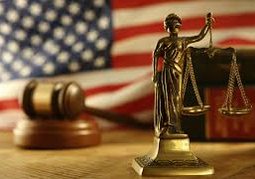
Whenever drone policy is raised as a topic, privacy concerns follow close behind it as a discussion point. The idea of aerial surveillance that is cheaper, less time-intensive, and requires fewer man hours to get off the ground leads immediately to concerns about the development of a surveillance state, where individuals can be monitored round the clock, and every public action can be recorded for posterity.
Current Fourth Amendment jurisprudence indicates this might not be constitutionally problematic — the Supreme Court has twice held that the Fourth Amendment does not require police to obtain a warrant before observing what any other member of the public could with the naked eye, even when that observation takes place in the public airspace.
Yet recent decisions indicate the law may be shifting to address the privacy concerns posed by drone technology.
Earlier this week, the U.S. District Court for the Eastern District of Washington granted a defendant’s motion to suppress evidence collected as a result of 24/7 video surveillance of his front yard.
In United States v. Vargas, police officers installed a video camera on a utility pole more than 100 yards from Vargas’ rural home and continuously recorded activity in the front yard of Vargas’ property for more than six weeks.
The camera observed only what any passerby might have seen, yet the court determined this violated Vargas? Fourth Amendment right to be free from unreasonable search, holding that the Constitution permits law enforcement officers to remotely and continuously view and record an individual?s front yard only after obtaining a search warrant to do so.
The court based its decision on the idea that there is a reasonable expectation of privacy in the activities occurring in and around the front yard of their homes, especially when those homes are in rural areas where regular passerby are unlikely.
To decide whether a reasonable expectation of privacy exists, the court must assess whether:
- the person in question had an actual (subjective) expectation of privacy, and whether
- society is prepared to recognize that subjective expectation as reasonable.
The court held that society expects law enforcement?s continuous and covert video observation of an individual?s front yard must be judicially approved.
More importantly, the court distinguished this case from California v. Ciraolo, where the Supreme Court permitted ?plain view? observations by an officer?s naked eye, pointing out that the surveillance here was conducted both electronically and continuously.
Though these factors have rarely been used to weigh the reasonableness of a search in the past, the court affirmed that, with electronic surveillance by the government increasing, the need to balance its utility as a tool with the Fourth Amendment concerns it raises.
Though Vargas is a district court decision that may be revealed to be an outlier or even overturned entirely, it joins a growing list of recent cases that indicate increased judicial anxiety with pervasive surveillance and may lead to changes in Fourth Amendment jurisprudence aimed to contend with modern complications to the old framework.
In United States v. Jones, the Supreme Court held that the government?s attachment of a GPS device to a vehicle constitutes a search under the Fourth Amendment, and in Riley v. California, the Supreme Court held that the police may not search a cell phone seized during an arrest without a warrant.
Though the Supreme Court has yet to address drone surveillance and its Fourth Amendment applications, these cases shed light on what that case may look like when it arises.
As technological advances allow newer and more feasible ways to conduct around-the-clock surveillance of individuals and their property, courts will necessarily have to adapt existing jurisprudence to keep pace with new technology.
The above decisions seem to indicate the Supreme Court is ready and willing to take on cases that pit traditional notions of privacy against the capabilities of cutting-edge technology, and it is conceivably only a matter of time before the information captured by drones makes its way onto the Supreme Court?s radar, and perhaps its docket.
Source: jdsupra.com
